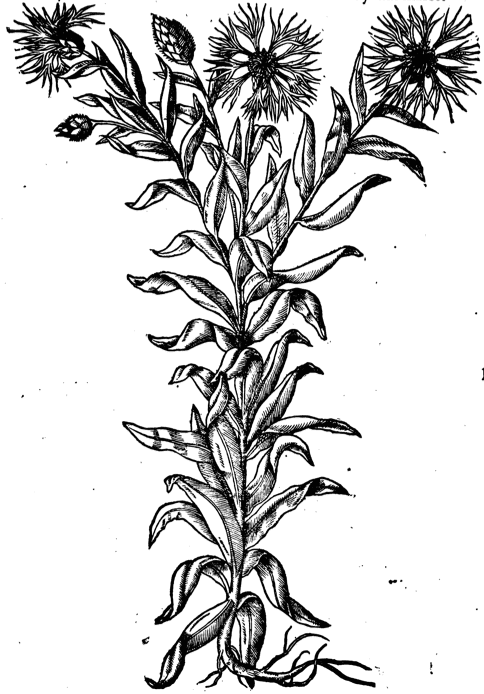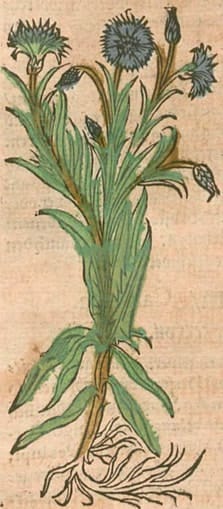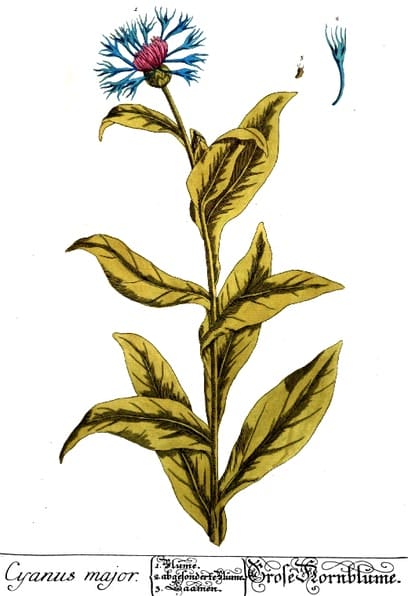Cyanus, Blue-bottle or Cornflower

|

|
|
New Kreuterbuch, Matthiolus, 1563 |
Krauterbuch, Lonitzer, 1578 |
 Herbarium Blackwellianum, 1750
Herbarium Blackwellianum, 1750Botanical name:
Centaurea cyanus (syn. Cyanus major, Cyanus cyanus)
Great, Common, Double, Small-leaved, Mountain and Creeping types were used.
Parts used:
Flower
Temperature & Taste:
Cool, dry. Bitter
Classifications:
Astringent, Opthalmic, Cardiac, Alterative, Alexipharmic
Uses:
1. Clears Wind-Heat, Resists Poison:
-Fevers
-given for venom including bites of Scorpion, Spiders, Rabid Dogs, Vipers
-various Poisons
-Epidemic diseases, Plague (seed or flower)
2. Clears Heat, Brightens the Eyes:
-red, inflamed and painful Eyes
-flowers, juice or distilled water topically
3. Clears Heat, Moves the Blood, Stops Bleeding:
-blood stagnation and bruising, internal Trauma
-ruptured Veins, hematoma
-Spitting Blood
4. Promotes Urine:
-Edema, Fluid retention
5. Externally:
-applied to fresh Wounds
-ulcers and sores of the Mouth (juice)
-dropped into the ears for pain and inflammation of them
Main Combinations:
1. Bleeding or Trauma:
i. take Cornflower with Comfrey
2. Spitting of Blood, Cornflower with Comfrey, Plantain, Horsetail
Cautions:
None noted
Main Preparations used:
Distilled water of the Flowers was used
